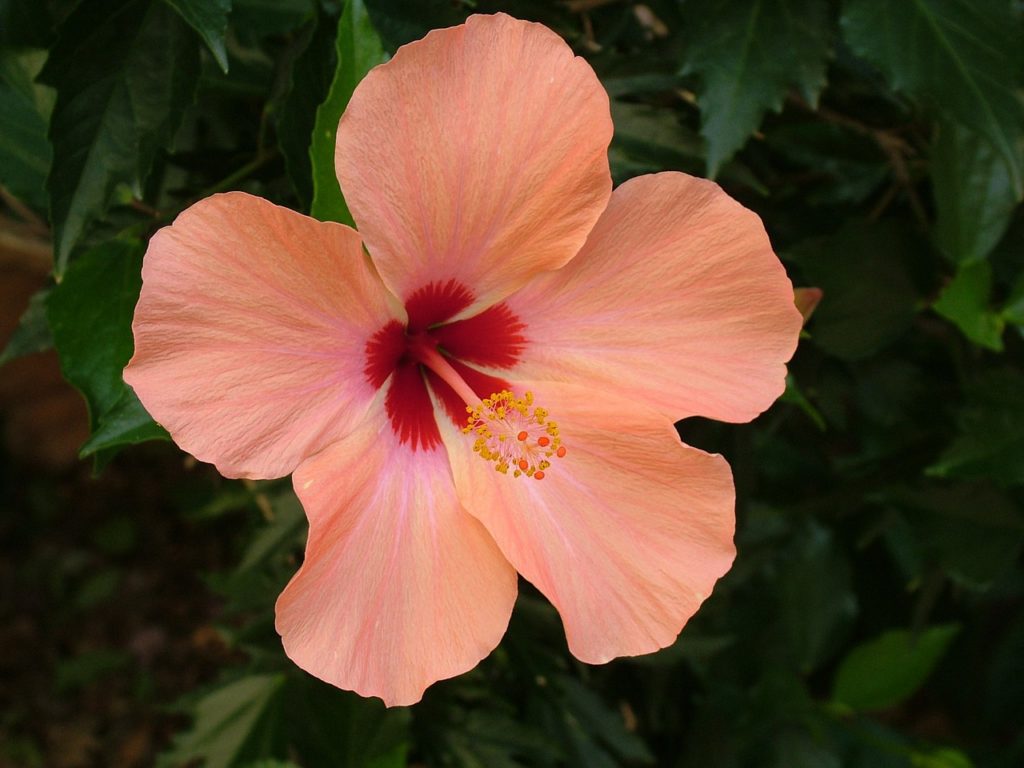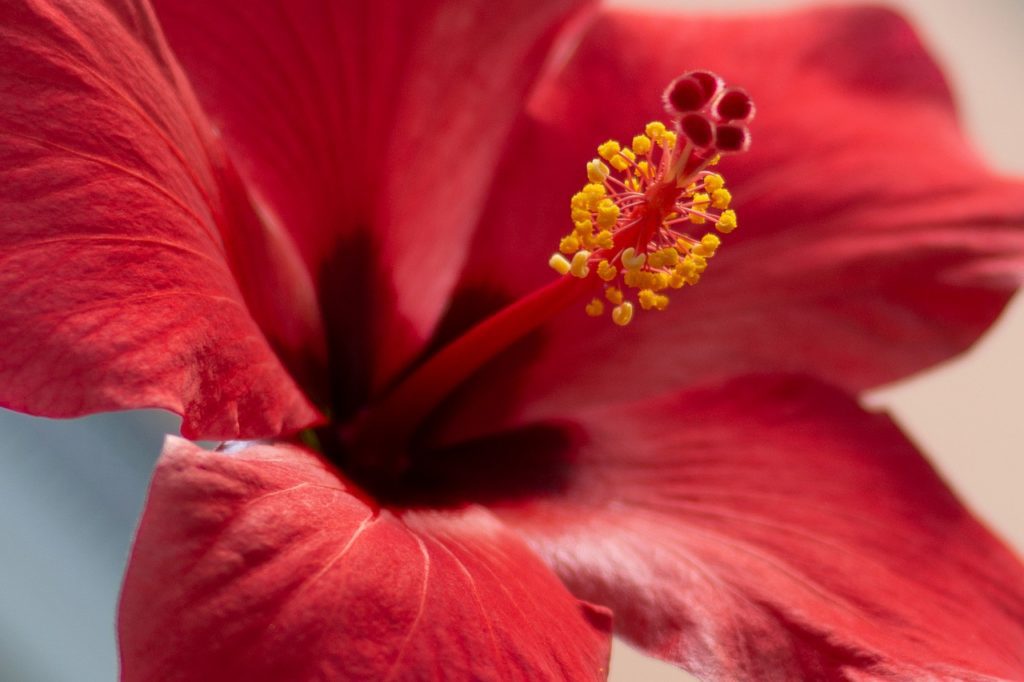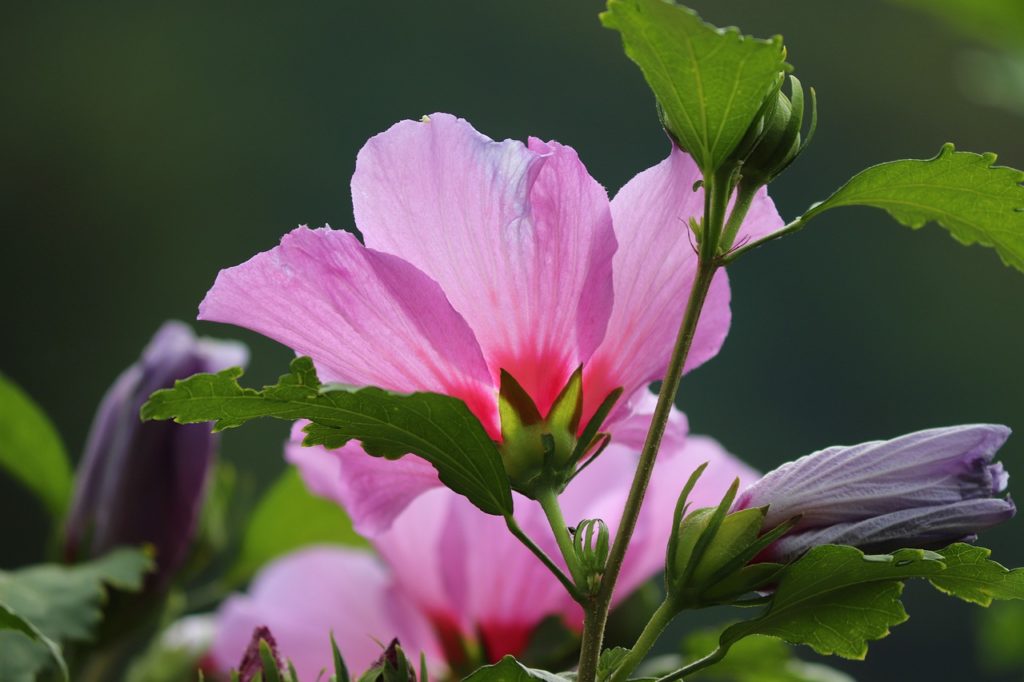The top reasons why hibiscus leaves will curl up are underwatering, poor quality soil, poor drainage, lack of nutrients cold weather or overwatering. Good quality potting soil and a fertilizer specially made for them will make sure they get the nutrients they need and prevent the main causes of leaf curl.
This article will explore the main reasons why hibiscus will experience leaf curl and easy solutions.

Top causes of hibiscus leaf curl and solutions
Check out the common causes of hibiscus leaf curl so you can work out what is happening with your plant at home.
1. Not enough water
Hibiscus are a tropical plant and thrive on regular water to keep them growing well. Plants that get dry over the winter or over unseasonably dry summers will suffer and their leaves can begin to curl.
Hibiscus grown in pots are more likely to suffer from this as pots that are in direct sun or a dark color can dry out quickly on warm days. Regular water is the key to keep hibiscus happy and to prevent leaf curl.
Before hibiscus leaves turn yellow or brown and die off due to lack of water they will curl up so this is the time to act fast. Test the soil and if it is dry 2 inches below the surface water the plant deeply using your hose or watering can.
Keep the plant well watered for the next week and watch to see if the leaves straighten up. If they are too damaged they may drop off but it will save the rest of the plant which will grow new leaves once it is getting enough water.

2. Poor quality soil
Hibiscus plant love well draining, nutrient rich soil so for those planted in pots they will need a good quality potting soil. For hibiscus plant that have been in the same pot for 2-3 years, they may be suffering from compacted or low nutrient soil.
Repotting your hibiscus can be a good idea if you suspect this is the problem causing leaf curl. Potting soil will compact over time so check to see if the soil absorbs water well. If the water runs straight out the bottom or just sits on the top it might be time to repot your plant.

3. Not enough drainage or nutrients
Hibiscus plant need a regular supply of nutrients but particularly in the warmer months where they are growing and producing flowers. A fertilizer specially made for hibiscus which is low is phosphorus is idea. Look for one that has added minerals including iron which is essential for hibiscus plants to bloom and grow well.
Check out hibiscus fertilizer on Amazon.

4. Cold weather
Hibiscus love warm tropical weather, if they experience frosts this can damage the leaves and cause them to curl over. In very cold weather or frosts the leaves can actually drop off completely but this can be prevented if you catch it quickly.
Move potted hibiscus into an area that is sheltered. Near a wall or garage is a great way to stop frosts. For hibiscus in the ground, a light shade cloth can be draped over the plant if you know that frost is coming and can save your plant from leaf damage.
5. Overwatering or lots of rain
Too much water can also be bad for hibiscus plants, causing them to experience leaf curl. Too much water in the soil can starve the roots of oxygen and make it more difficult for the plant to absorb nutrients.
Overwatered hibiscus or excess rain can cause mold or fungus growth on the soil and the topsoil will look damp and soggy.

For indoor hibiscus, make sure they are not sitting in a tray of water. After watering, allow the water to drain out before placing them back on the tray or empty the tray after they have drained for 30 minutes or so.
For outdoor hibiscus plants, a layer of bark mulch can help to disperse some the rain and absorb excess moisture keeping it away from plant roots.
For overwatered hibiscus plants in pots move them into bright sunlight. While direct hot sun can cause damage, bright light can help the soil to drain out and help the plant to recover.
6. Pest insects
Insects can be another cause of leaf curl in hibiscus plants so check the leaves o the top and bottom to see if you can see any insects.
Aphids are a common insect pest that can attack the leaves and stems of hibiscus. These small, green sap sucking bugs can attack hibiscus particularly in Fall and Spring. They will suck the sap from the stems, releasing a honeydew substance which is sticky and can attract ants.
Sooty mold can also start to grow in the are where the leaf stem reaches the branch.
To deal with aphid attack on hibiscus, start with a high powered hose and wash off the excess bugs. A dilute mix of a few drops of dish soap and water can be sprayed on the affected area.
If this doesn’t work, try some Neem oil which is a vegetable that can be sprayed on the aphids.
Spider mites are also a pest that can attack hibiscus. These bugs look like a small black bug with red legs. They can be treated with horticultural soaps to quickly get rid of this problem.
Hibiscus leaves curling up | Summary
Hibiscus plants love warm, tropical weather and will thrive when given enough water and planted in good soil. Pests can be an annoying cause of leaf curl but are easily treated with low impact horticultural oils like neem oil.
Hibiscus will reward you with beautiful blooms and bright green leaves when they are taken care of. I still remember the bright red hibiscus flowers in our original family home and always reminded me that spring and summer was here.
I am an accredited practicing dietitian, experienced gardener and a dedicated cook. I love writing and sharing my experience so you can learn from my successes and mistakes.
